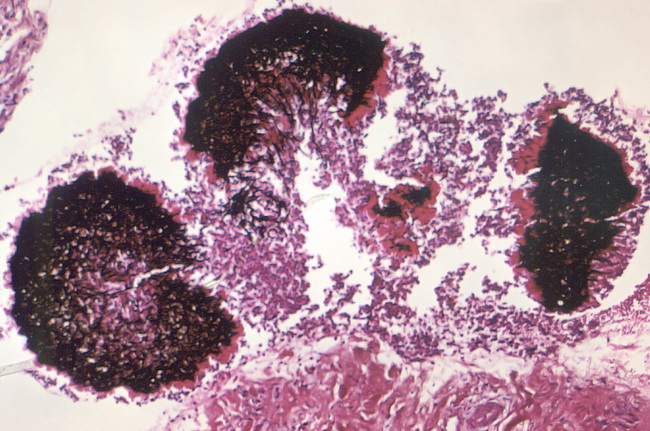Mycetoma : Acremonium falciforme


Comments:
This photomicrograph of Gomori and H&E-stained tissue sample shows three granules of the fungus Acremonium falciforme. A. falciforme fungus is a causative agent for the disease in humans known as eumycotic white grain mycetoma, a chronic granulomatous inflammation mainly affecting the cutaneous and subcutaneous tissues, but has been found to also infect the eye (keratitis), nails (onychomycosis), and if systemically disseminated, can infect the heart (endocarditis), brain (meningitis), bones (osteomyelitis), and abdominal cavity (peritonitis). Immunocompromised individuals, such as those with AIDS, or undergoing chemo- or organ transplant therapy, are most susceptible due to the opportunistic nature of this organism. Image courtesy of: Dr. Arvind A. Padhye, CDC Public Health Image Library.



